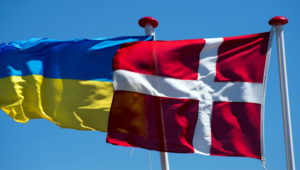Mounting evidence shows Russia blew up Kakhovka dam: Polygraph exposes usual patterns of Russian propaganda

The weight of evidence convincingly indicates that Russia blew up the Kakhovka dam.
Such conclusions of the analytical investigation were published by the Voice of America Polygraph project. Its findings explain the reasons behind Russian propaganda's influence on Western media in covering the Kakhovka Hydroelectric Power Plant (HPP) blow-up.
Earlier, the President of Ukraine, Volodymyr Zelensky, stated that it would be "physically impossible" to blow up the dam entirely controlled by the Russians from the outside with shelling. In October 2022, Zelensky warned the Council of Europe that Russia was mining the dam. His adviser, Mykhailo Podoliak, said that Russia plans to destroy the dam to flood the area and stop a Ukrainian counteroffensive.
- The model of deception and concealment of reality is always the same, be it Kakhovka or Bucha, where Russian forces committed war crimes and a massacre in the first weeks of the invasion.
Russia accused Ukraine of blowing up the dam. Still, Polygraph warns that the Kremlin is doing the same with all the crimes it commits and for which international institutions find Russia guilty, including war crimes using terrorist methods.
Joe Bodnar, an analyst at the Alliance for Securing Democracy, which tracks Russian disinformation, said Russian propagandists "directed their resources to convince the world that Ukraine destroyed the Kakhovka Dam." Russian state media and diplomatic services tweeted about the dam hundreds of times in different languages. Bodnar compares this to the spread of information about Russian crimes in Bucha.
Even former Fox News anchor Tucker Carlson joined this process in the first issue of his show on Twitter. He accused Ukraine of destroying the dam and called President Volodymyr Zelensky a "rat-like thing."
- Russia accuses Ukraine of crimes it commits
In the same way, during its invasion of Ukraine, Russia creates narratives accusing Kyiv of its actions. This is how they dealt with information about the brutal murders in Bucha, mass graves in Izium, the attack on the Mariupol theater, rocket attacks on civilian objects, and other crimes.
The same scenario of Russian information policy was applied when on July 17, 2014, a missile system of the 53rd anti-aircraft missile Brigade of the Russian Air Defense Forces shot down the Malaysian airliner MH17 over Ukraine. At that time, Russia also littered the space with contradictory messages.
Analysts at the RAND Corporation, a US think tank and research institute, have described this approach as a "firehose of lies" model, which involves spreading mult and competing narratives to shock or distract an audience rather than convince them of a single truth.
"Despite Moscow's denials about alleged war crimes in Ukraine, the United Nations, international monitors, rights groups, and others have accused Russia of indiscriminately shelling and bombing populated areas, killing civilians and destroying hospitals, schools, and residential buildings," Poligraf reminds.
Serhii Kyslytsia, the representative of Ukraine at the UN, accused Moscow of avoiding responsibility for the dam's destruction.
Earlier, in an interview with the Voice of America, Kyslytsia called the detonation of the dam "state terrorism."
- Influence of Russian propaganda on coverage of the dam explosion
Shortly after the collapse of the dam, American government officials said they had evidence that a powerful explosion had occurred at the Kakhovka HPP before the dam collapsed, the Voice of America reported.
This was recorded by American intelligence satellites equipped with infrared sensors, the New York Times reported concerning a high-ranking official in the White House.
Journalist Tetiana Vorozhko explained in detail the influence of propaganda on the coverage of the Kakhovka HPP topic, even in the Western media, in the Ukrainian Service of the Voice of America program. Some publications even caused official indignation on the part of the Ministry of Foreign Affairs of Ukraine and were later refuted by analysts and, as mentioned above, by further data from satellites.
"We have seen a certain evolution in the coverage of the Kakhovka HPP topic these days," says Tetiana Vorozhko. According to her, on the first day in the mass media, theses such as "we do not know what happened," "the Russians blame the Ukrainians, and the Ukrainians blame the Russians" circulated in the mass media, which caused resentment not only on the Ukrainian side.
Thus, historian Timothy Snyder had to remind American journalists how such events should be covered.
"You cannot give equal weight to Ukrainians and Russians. That is, if we give the word to Peskov or other powerful Russian people, then it should be done in the context of how they lied all this time," Tetiana Vorozhko cited Snyder.
According to her, the coverage has now changed: a "but" has been added to the sentence "the sides are blaming each other," followed by a report on fact-finding and analysis indicating that this was likely a deliberate blow-up of the dam by Russia.
Tetiana Vorozhko also named the reasons for the problematic coverage of the dam explosion:
- Lack of timely, clear statements by the American authorities that it was Russia that carried out the detonation
- Russian propaganda played a significant role: Russian mass media, sympathizers of Russia, and Russian diplomats in many languages flooded the information space of the world with the message that Ukraine was allegedly behind the destruction of the dam. Tucker Carlson's show is an example of this
- The American press also needed time to understand the unprecedented tragic event, to find its sources, and to check the information.
"Now we can already see that the enormous influence of Russian propaganda had a short-term effect," Tetiana Vorozhko concluded.
What we know about Russia's destruction of Kakhovka plant
As Rubryka reported, on the night of June 6, Russian invaders blew up the Kakhovka HPP, located a few kilometers from the temporarily occupied city of Nova Kakhovka, Kherson region.
The death of nine people due to flooding was confirmed in the occupied city of Oleshky on the left bank of the Kherson region.
One person also died in the Mykolaiv region due to flooding after the explosion of the Kakhovka HPP.
According to the Ukrhydroenergo state water company, the water level in the Dnipro River in Kherson is 4.18 meters. During the day, the indicator decreased by 54 cm.
The explosion of the Kakhovka HPP caused an environmental disaster. As a result of the explosion of the Kakhovka HPP dam, water supply problems began in Kryvyi Rih, Marhanets, and Nikopol.
Volodymyr Zelensky stressed that the disaster at the Kakhovka HPP created by the Russians would not stop Ukraine from reoccupying its territories and has not increased the chances of the occupiers remaining on this land.

























































